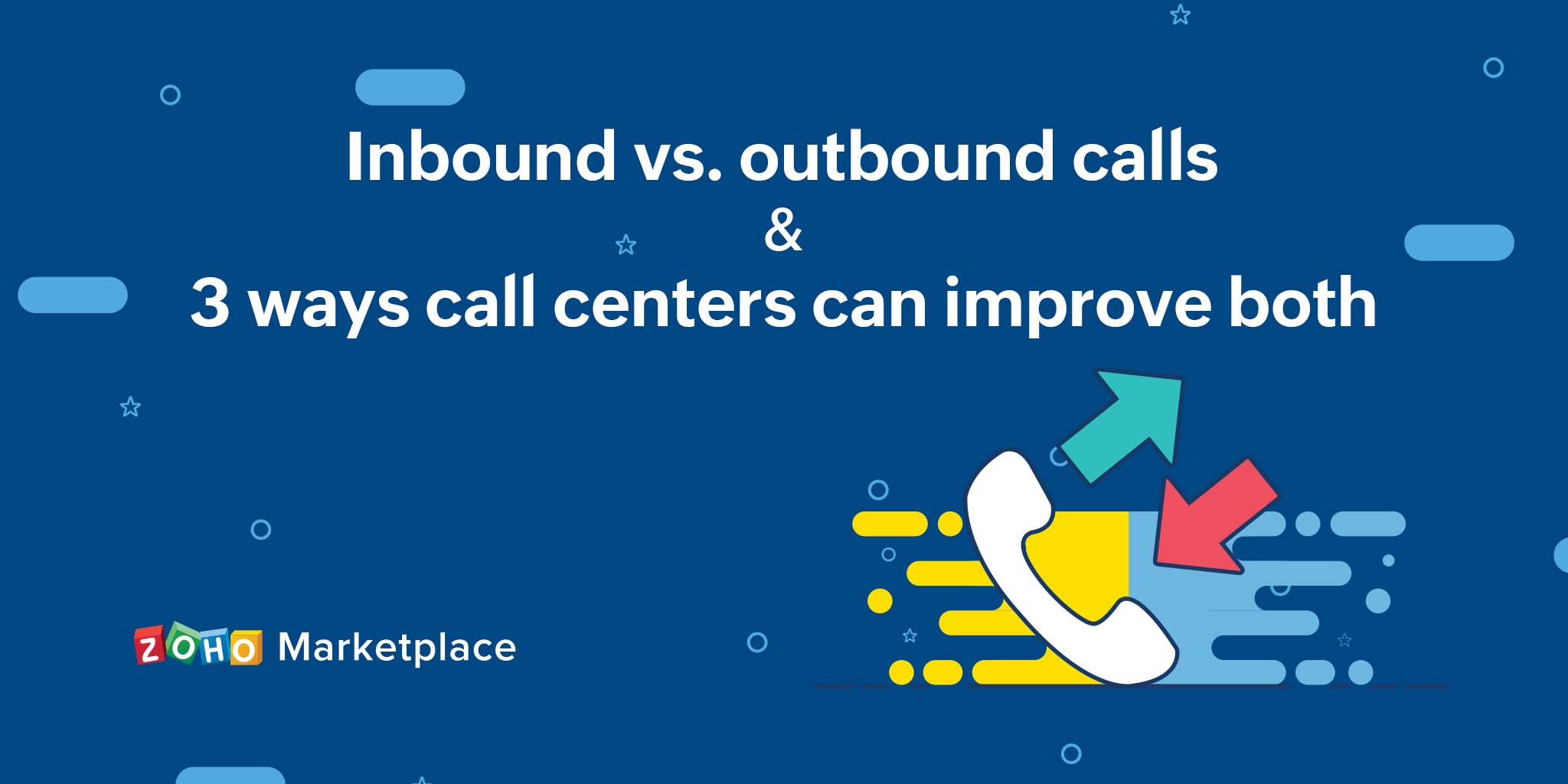
This is a guest post by Grace Lau, Director of Growth Content at Dialpad.
A call center is a hub for all sorts of operations, from customer support to market research, and because of this, every call center is different. But, there are two main types: inbound and outbound call centers.
In this article, we’ll delve into the differences between these setups and provide you with some tips to get the most out of your operation.
What’s the difference between inbound and outbound calling?
Call centers serve many different functions. These can include receiving and distributing incoming calls and messages from customers, maintaining customer databases, providing technical support, and onboarding new customers.
Most call center activity can be categorized as either inbound calling (customers calling into the call center) or outbound (call center reps calling out to prospects). Aside from being based on company-customer interactions, inbound and outbound call centers employ fundamentally different purposes, training techniques, and technologies.
How do inbound call centers work?
Inbound call centers assist customers who call into the help center directly. Inbound call center agents must be trained to be helpful, empathetic, patient, and proactive to solve customer queries promptly.
Typical services deployed in an inbound call center include:
- Customer service and technical support
- Inbound sales
- Product and service inquiries
Technologies used to aid inbound call center operations include call monitoring, call transfer, and automatic call distribution. These tools help inbound call centers provide the best possible level of customer service, and deliver personalized services to resolve customer queries quickly.
Some organizations might only engage in inbound calling, but many will combine their inbound operation with outbound services. This allows companies to ensure that their customer service team covers all possible channels across the entire sales cycle.
What is an outbound call, and how do outbound call centers work?
In outbound call centers, agents reach out to prospects directly with new products or upgrades.
Typical services deployed in an outbound call center include:
- Market research
- Sales calls
- Cold calls (reaching out to prospects who have not actively engaged with the company)
- Hot calls (reaching out to prospects after a previous interaction with the company)
Outbound calling is typically a sales-oriented process, and reps are trained to generate leads and convert customers through marketing and persuasive sales techniques. Customer relationship management (CRM) and interactive voice response (IVR) tools are key to the functioning of an outbound call center.
CRM for retail helps outbound call teams track their customer interactions and with targeted metrics. Other useful tools include automatic and predictive dialers, which dial telephone numbers from a list of prospects and use machine-learning algorithms to increase agent efficiency.
How to improve inbound and outbound operations in your call center
Inbound and outbound calling are essential both for generating new leads and keeping customers satisfied with your services.
Let’s look at some strategies that can help you improve both inbound and outbound calling in your business.
1. Be customer-centric
The most important ingredient for inbound success is customer-centricity. Your customers are calling into your call center directly, which usually means they’re looking for support, guidance, or have an issue that needs resolution asap.
Providing your customer with a great experience will increase trust in your brand and encourage long-term customer loyalty. Great experiences generate revenue.
2. Support your agents
When customer support agents feel valued and supported by their company, they’ll be better equipped to provide quality services.
Supporting your agents starts with choosing the right supervisors. Call center management is imperative, and supervisors are the glue that holds everything together. Make sure that your agents have the support of a highly trained and experienced manager.
3. Listen to the metrics
There’s so much data circulating in both an inbound and outbound call center. This data is like gold dust and can help you improve your service offerings based on targeted insights. But you won’t be able to mobilize all of it. Pick the best metrics for your operation.
Top metrics for inbound call centers include:
- Average handle time
- Call abandonment rate
- First call resolution
- Net promoter score
Top metrics for outbound call centers include:
- Average handle time
- Calls per agent
- Occupancy rate
- Answer success rate
You’re ready for call center success!
Most call centers combine a range of outbound and inbound strategies. Call centers link customers and brands, so getting your call center strategy right is critical to overall customer satisfaction and lead generation. Luckily, there are great tools out there to help teams optimize and automate their call centers for success.
Zoho CRM offers omnichannel customer engagement, analytics, and a wide range of integrations with third-party apps and services.
Learn how the Dialpad and Zoho CRM integration can help you transform your call center.
Work smarter by adding new capabilities to Zoho CRM with business solutions from Zoho Marketplace. Explore Zoho Marketplace >
Comments